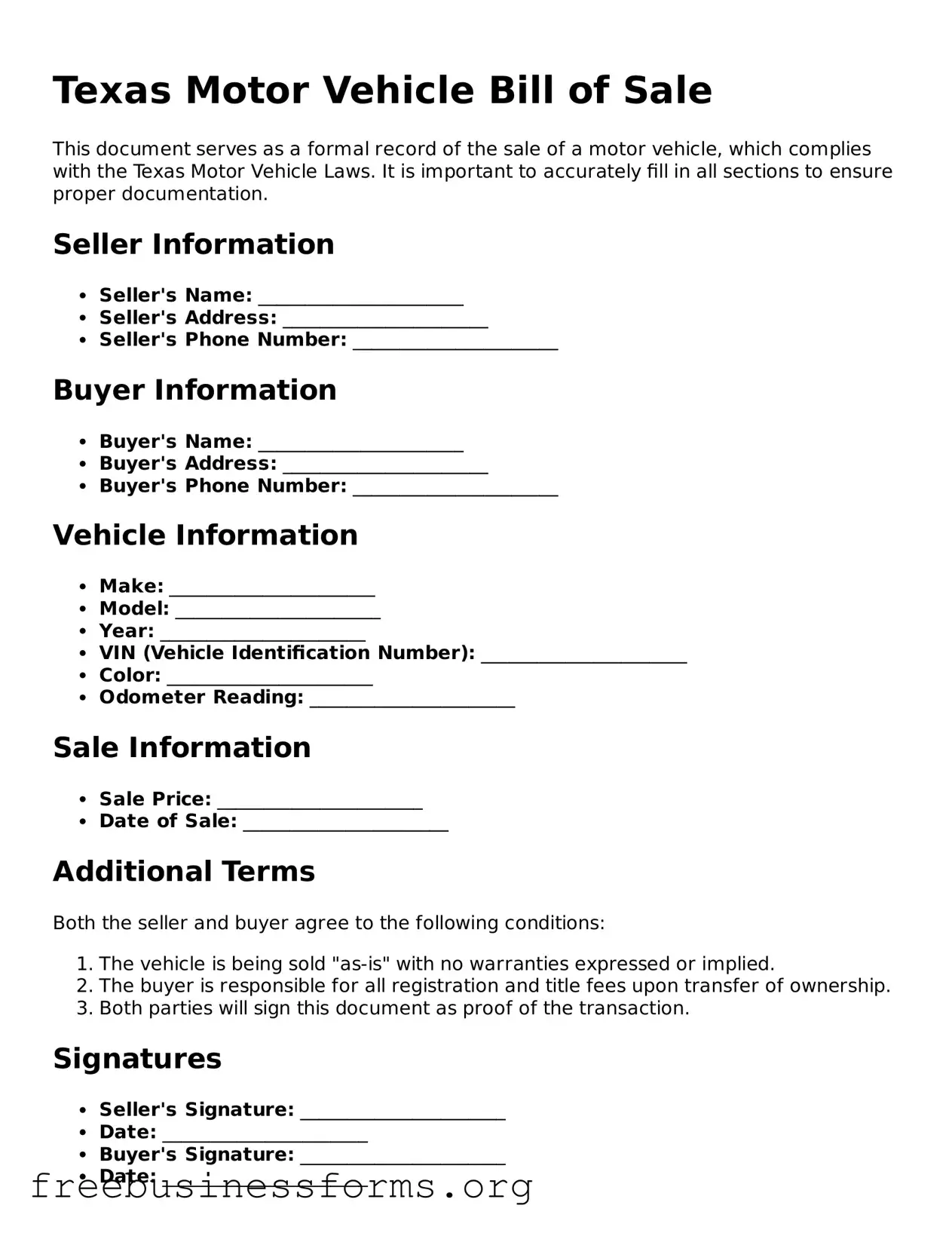Blank Motor Vehicle Bill of Sale Template for Texas
The Texas Motor Vehicle Bill of Sale form is a legal document that records the transfer of ownership of a motor vehicle from one party to another. This form is essential for both buyers and sellers, as it provides proof of the transaction and details about the vehicle involved. Understanding how to properly complete this form can help ensure a smooth transfer process and avoid potential disputes.
Open Form Here
